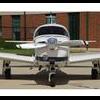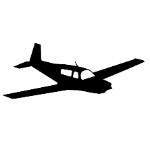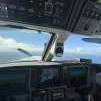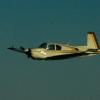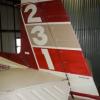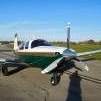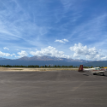Leaderboard
Popular Content
Showing content with the highest reputation on 06/26/2017 in all areas
-
I read somewhere that you should only cycle the prop with full flaps if you have an AOA indicator, otherwise you'll burn up the cylinders.8 points
-
Cycle the prop with full flaps, cowl flaps half open, and 50 degrees LOP while slowly richening to 100 degrees ROP.....6 points
-
4 points
-
I follow the manufacturer's recommendations that have not been disproven with more modern testing and recent data. Full disclosure, I've attended the APS class at GAMI and have seen their test facility and watched as tests have been run. I've also studied their data and the conclusions they've drawn from it. It was very convincing. But even before attending the class, I'd learned that the consensus from this forum and the BeechTalk forum, that pilots who get involved and study the data, consider shock cooling to be a myth. Whereas the defense for the issue of shock cooling comes from a simple, "it's the manufacturer's recommendation". I'm sorry, I shouldn't have been condescending about it. But its difficult not to see this as silly, when it has been so thoroughly debunked as a myth by the data.3 points
-
What is the point of all this cycling...? 1) tests the oilP gauge to at least move... 2) sort of tests the governor's gear pump to pressurize the prop system... 3) refreshes the oil in the system, which is generally done over time, on its own... I have only had one failure, the plug in the crank shaft fell out and oil leaked out of the system. No oil pressure, no prop governor. The prop gets removed to hammer the aluminum disc plug back in its place. The leaked oil is all internal to the engine case. Did I miss anything? Best regards, -a-3 points
-
Back to the subject of T&G's: Don't do them if you're not comfortable with them, but why haven't you become comfortable? T&G's do allow more landings in a shorter amount of time. Prior to the advanced simulators, we did T&G's in single and multi-pilot Navy aircraft. The airline did them for years with new pilots in big and small airplanes. I do them in all the airplanes I've owned, or rented. To me, a T&G is simply a maneuver. Practice and learn until proficient...or not.3 points
-
If rw length is not a factor, i.e. >4000 ft or so, I prefer no flaps. I like the smooth liftoff and climb w/o flaps.3 points
-
3 points
-
Actually you're wrong on your second point. I upgraded to the 2017 year model on the cargo pants.2 points
-
The aft inboard corner of the battery. Coming off the battery contractor is a 6" long wire with a black inline style fuse holder in it. Inside is a glass fuse that blows.2 points
-
FWIW You don't have to worry about getting oil circulating through the prop governor. it flows all the time. Oil from the governor goes to the front main bearing where it is channeled through the crank to the piston in the prop hub. The front main bearing lets the oil flow out the sides like all other main bearings. The governor supplies enough volume to maintain prop pressure in spite of the flow through the bearing. The oil in the prop hub is stagnant unless you cycle it which causes the oil to come out of the hub and be replaced with new oil.2 points
-
I guess the folks in Arizona, don't even have to wait for the oil to come to temp since it's already there and shock cooling is less of an issue when the temps can't get below 120.2 points
-
Once, or twice at the most. You also shouldn't let the RPM drop more than a couple hundred. Its hard on the engine, especially if the oil is still cold.2 points
-
John Deakin says once is enough for most. That's what I do. https://www.avweb.com/news/pelican/Pelicans-Perch-16-Those-Marvelous-Props-182082-1.html Sent from my iPad using Tapatalk2 points
-
Wow. Reading this thread brought back some bad memories.... Flying a Seneca 2 along V2 GEG to SEA late at night. Winds over the mountains 130+ knots rolling over Mt. Rainier. Going to GEG was smooth with with good groundspeed. Coming back, very slow, but smooth.... till about 45 east of SEA. For those unfamiliar, that's just past the foothills of the cascades. I started the party at 10000MSL and all hell broke loose. The first hit took me to roughly 18000 with idle power and mostly out of control. Then three HUGE jolts and down to around 6100 (MEA for V2 is 8000). Three jolts and back up to 16000ish then back down to around 6500. Keep in mind, the engines were from overboost to idle (at this point is didn't give a crap about engine health) and the airspeed was between zero and Vne+20 I broke the overhead panel with my head, and the DG tumbled (thank the good LORD the attitude didn't tumble)! Finally flew out of it about five minutes later shaking and freezing. I had to pry my hand off the throttles. Needless to say, I was scared! Upon landing at BFI, I literally couldn't get out of the plane and SERIOUSLY considered my career choice. Decided I really did love flying that much to keep going. Result of aircraft inspection: - Main wing spar bent in two places - MANY rivets popped or missing - Tail twisted - Engine mount broken The mechanic told me I was a lucky guy. No kidding. I went for the ride! Lessons learned: - Mountain rotors are nothing to screw with - Piper makes a much stronger airframe than I gave them credit for at the time. - You are Fu**ed partial panel in that situation - That was back in 1995 and it still remember it like yesterday. Hoping to never have a repeat performance!2 points
-
Yeah, but they didn't need to be back at work a week from Monday.2 points
-
So if there is a mile of runway left, what's the harm in taking off again instead of stopping? I've been doing them in Mooneys for 33 years. I didn't know they were hard or dangerous until I joined Mooneyspace.2 points
-
I went and found Mount Hood today. Also went up to 17,500 to see if I could make it... around 200fpm at that altitude, somewhat below gross, trued out at about 128. 15,500 seemed to give about 138 and 9.5GPH. Still need to do a better accounting of the power and fuel flow in the 5000-10000 foot range, I tried to level off every 2000 feet and lean out but my attempt to photograph the fuel flow readout didn't do so well. Also, the hangar elves need to check one of the EGT probes.2 points
-
I had a fun and interesting flying weekend that is still in progress. Flexibility was required. The initial plan was for me to head to Boston (KBED) and meet my girlfriend and her kids flying there commercially. We were going to then fly her kids to friends (KBDL) and spend an adult weekend in Boston together. I took off from Erie, PA Friday morning to head to Boston and spend some time there on my own for a few hours before meeting up with everyone. I take off heading west, make the East turn and then as I am crossing through 9k for FL190, I saw the text message that the GF's flight from Cleveland to boston had been canceled. I called ATC and changed my destination from KBED to KCLE and 30 seconds later, I was given direct to Cleveland Hopkins. I had to run high power and fairly rich to burn fuel to be able to pick them up. Grabbed her and 2 small kids, then headed to KBDL to drop off her kids with their friends. Had to fly under O2 levels for the flight, per VIP request (see some of my other posts). Did a fun 600 overcast approach into KBDL. Then a quick flight and another 500-600 approach into KBED in boston. We had a great weekend in Boston. She gathered her kids by car and headed home by United . I had a great Father's Day afternoon with my daughter (who lives in Boston). I was able to make it as far home as Binghamton, NY before I ran into a wall. I tried to wait it out and sneak out after it passed, but the FBO was closing. The lone lineman tonight was great and when we realized that I wasn't getting home tonight, there was no hesitation for him to pull it into the hanger before the weather hit. I grabbed one of their cars and headed to a hotel. No rush to get home. I'll leave in the morning to get home by 7 ot 8 (1.5 hour flight +/-) as I start Neurotrauma call at 8. I do have backup if I can't make it. All the plan changes and unexpected delays are totally worth it to spend a few hours with my daughter today. Making my girlfriend happy, too, is a bonus. Couldn't have done it without my Mooney. N708PJ on flightaware for all the antics. Happy Father's Day to all the dads out there. My daughter is my #1 copilot and the reason that I do what I do. Brad2 points
-
All I know is that the first convicts arrived in 17881 point
-
1 point
-
Taking off with Landing Flaps and Takeoff Trim is a whole different ballgame than a sudden, low-level go around with Landing Flaps and Landing Trim. The first time you try that, please be plenty high!! I find the trim has a more pronounced effect than the flaps do, and can require significant arm strength while spinning the trim wheel! But then, your nice new ride has electric trim, so you can push with both arms . . . . .1 point
-
1 point
-
I flew to Tucson last week. It was 119 when I took off. The plane flew fine. The OAT at 6500 was 91F. The oil temperature never got below 205.1 point
-
Take a look at the log of the CHT when opening the cowl flaps before landing and leaving them closed. You'll be firewalling a 150 degree engine instead of a 230 degree one On a J model at least, locking the cowl flaps full open in flight damages the hinges, and eventually tears out the rivets that hold the cowl flap frames in the cowl and eventually will tear the cowl flaps frames too. I replaced all that but it's probably a 2k job for the work. There's really no need for anything more that trailed open for takeoff.1 point
-
I always open my cowl flaps before landing. It's one less thing to do on a go-around (or touch and go). The concept of shock cooling using air as a coolant never made sense to me. Why doesn't flying WOT at cruise speed with high cylinder temperatures into pouring rain at 40F have a damaging effect? I'd imagine throwing bucket loads of cold water onto the cylinders at high speed would be several orders of magnitude more potent than just opening cowl flaps.1 point
-
Here in Texas, once the engine has warmed to operating temperature, it's unlikely to completely cool down for a couple of days, so cycling once per day is more than enough But yes, I generally only cycle once per day. But if the engine was shutdown for most of the day after an early flight and then starting again for an evening flight, I'd cycle once again. But shutting down for up to two or three hours, I wouldn't see the need to cycle it again.1 point
-
As a fan of science and therefore Deakin, one quick cycle and only the first flight of the day.1 point
-
I have used all three settings, however I tend to use the take-off setting on mine.1 point
-
Absolutely. A large number of pilots miss the point of this step by deep-cycling their props. The purpose of the step is to allow a bit of hot oil into the governor, which shouldn't take more than a hundred RPM drop or so. Multiple cycles, and/or multiple deep cycles will task the engine unnecessarily, especially if any counter weights were installed during balancing.1 point
-
Good point on oil temp. Personally I wait for oil temp to reach 130°F or so before run up.1 point
-
In my C's book, they are consecutive sfeps, with "Flaps--as needed." But because flap speed is higher, I drop them first, no later than pattern entry (although I'm sometimes still slowing down some then . . . ). Gear down abeam point of intended landing, slight power reduction and start descent. Having flaps out also makes the plane much more stable at pattern speed of 90 mph for downwind and base. Just like flying an approach, half flaps but 90 mph instead of 90 knots, use gear as trigger for descent. Hey, lookkee there, the last sentence before "WARNING"! Official Mooney writing to extend flaps on final as needed to compensate for variations in just about everything outside the plane. Yep, I do that, too.1 point
-
1 point
-
Me: I know you’re always looking to see what works best in your B-Kool so what do you recommend nowadays ? Bob: Block ice all the way..if you want more, fill the voids with crushed ice..we routinely see more than 2 hours of ice cold air. If your unit is an older blue one, we need to upgrade it..more than doubles air velocity. Upgrade is $125 and includes replacing any non functioning, components, takes about 1.5 hours. I'm flying up to Sedona to have Bob upgrade my B-Kool unit later this week.1 point
-
1 point
-
Glad I am not the only one...tinnitus drowns out the birds most days. I tried the foam plugs and much quieter with the Bose A20s. The sound of my voice with the plugs vs normal sideband was a little weird, but I can get used to that. Similar to halo/faro/clarity I would imagine. I am going to get a set of the custom fit permanent earplugs made that has the speech frequency range pass filter in them. I need them for work anyways as my 21 year old Peltors don't do much now except keep my ears warm.1 point
-
I was just at AAA on Friday... I was there "helping" with the pre-buy walk around on a Rocket. It was a bit concerning that the buyer isn't on this site. And when I suggested, wasn't all that interested. I can say that AAA has some really nice airplanes in that hangar. There are a couple of really nice O's, among other's. But don't wait around. The market for nice Mooneys seems to be very strong right now. AAA delivered their 20th Mooney of 2017 over the weekend.1 point
-
I gave up on aopa. EAA gets my dues now. Check to see if EAA has a more proactive and pragmatic approach to winning this battle.1 point
-
1 point
-
Congrats mpg! Re-learning is an awesome experience. It is a lot like learning the first time, but you pick things up so much easier/faster the second time around. Trying to remember it all is a different challenge... Have you gone through all the new weather services and picked a favorite? Things to avoid... 1) don't run out of gas. You already had the warning... 2) Don't fly VFR into IMC... 3) Don't fly into thunderstorms... 4) you have a few months to re-learn the next one... avoid flying in icing conditions. We Finally have you back flying long X-countries, no need to skip these important issues... PP 101, how to get in trouble early on... PP thoughts only, not a CFI... Best regards, -a-1 point
-
On our 14 hour flight home to CO from NJ I noticed some shimmering/glistening on the cowl just an inch or two aft of the prop...I thought to myself, "Hmmm, I must have a little leak somewhere." So I bring her in to get the wastegate fixed (cuz it broke and I lost the turbo at 17K a few weeks ago) and mention the shimmer to my A&P and point to a bit of streaking on the cowl. We pull the top cowl and he starts to laugh and says, "I can't believe you didn't have oil all over your windshield." And points to the prop seal that had worked its way completely out of its home. JESUS. Not only did I learn how to remove a turbo today but I also learned how to remove a prop!1 point
-
Spray on bed liner is very thick (0.100"+), any corrosion that started under it would be hidden until it's too late. And like @gsxrpilot said, it's weight. As a side note, most people tend to apply paint way too thick, which leads to chipping, cracking and peeling and getting to do it all over again in just a few years1 point
-
1 point
-
Yaay, Tom! Two successes---your Mooney is up again, and Basic Med is getting another Mooney pilot back in the air!1 point
-
You're flying an F, which was my last Mooney. I bought it with 1900 hours on the engine (1996) and had to perform the oil pump AD at 2000 hours and a few said the same thing you just did. The job cost me $500 and at that time an overhaul cost divided by TBO time put the cost of engine at $12 an hour. I got 400 more hours out of it (worth $4800 in engine time) and sold the F with 800 SMOH. The extra 400 that would have been on the engine had I rebuilt at 2,000 hours would have devalued the airplane another $4,000 at the time of sale. So.......that $500 saved (or earned) me a lot of money. The cylinder work will be under $2k. With a 1600 TBO engine on the Rocket and recently substantiated overhaul costs on this list, engine time is worth $32-$40 and hour. That means this is a break even investment at 60 hours. The math seems pretty easy for me, especially when considering oil consumption (very low) and oil filter contamination (displayed in O.P.). I guess if I was in the aircraft maintenance business I would hope for more aircraft owners with your opinion than mine. Tom1 point
-
Hi Craig, The price range is for completely assembled baffling, carb airbox if needed, spinner and backplate, hardware and cowling modified at my shop. I painted this one more for future promotional photos. I will deliver the cowlings in primer and it's up to the owner to have it painted to match. It's the time it takes to paint as well as trying to color match sometimes 15 year old faded paint. That's going to lead to problems I don't want to have. I don't have the hangar facilities to have airplanes dropped off for me to do. My current plan is to ship the baffling, spinner etc to the customer and have them send me the cowling. While they have the baffling etc changed out, I'll mod the cowling and ship it back to install. I haven't done this yet, but it's my current plan. Thanks, David1 point
-
Too many predators lurking there I guess . Beware the friendly stranger on the internet offering you a ride in his Cirrus.1 point
-
Basically my method and works 99.9% of the time. When it doesn't you either have too much or too little fuel and just need to figure out which. End of the day when in doubt flood it and do the two handed dance.1 point
-
They actually added the doors including the 4" increase in size for ease of entry for Chris's sweeties.1 point



